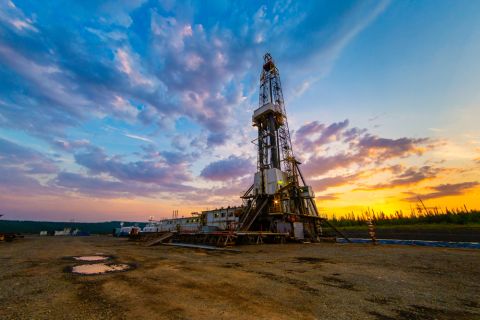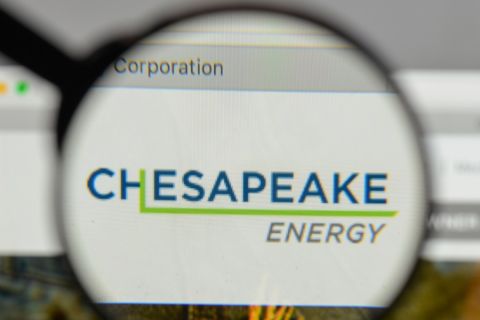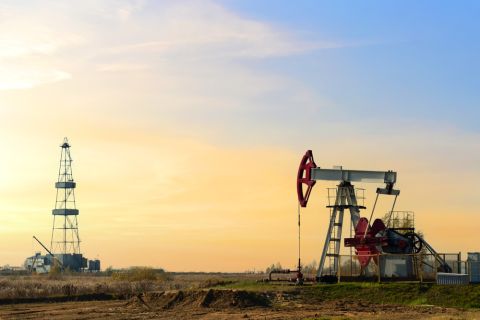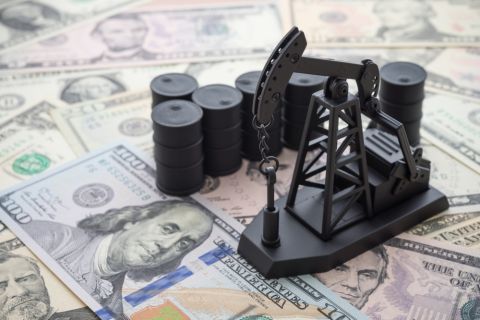Presented by:

The Great Crew Change is complete. Much discussed, fretted over and analyzed, the shift in the makeup of the oil and gas industry’s workforce that was long portended has come. And for all intents and purposes, it has come and gone.
Look around conference rooms, exhibit halls, cocktail receptions and Zoom meetings, and you’ll see the change firsthand. The industry is younger, more diverse, less formal, speaks in buzzwords, understands (mostly) cryptomining, sees printouts as passe, conducts business and does their jobs from their cellphones, and now frequents the office far less.
Much like the sources of energy it procures, the industry workforce has transitioned and continues to do so. It is the “S” in ESG—social responsibility. But while the industry has prioritized the “E”—environmental—with net-zero and other carbon and methane reduction targets, there is still work to be done to complete the ESG picture.
Part of the effort in achieving those end goals is the continued evolution of the industry’s workforce, essentially to make it more diverse. A diverse workforce doesn’t just make social sense and is the “right thing to do,” but it makes for good business, explained Molly Determan, COO with the Energy Workforce & Technology Council.
“The business case is that more diverse companies perform better and have better returns,” she said. “But also, as our work changes, as we become more focused on digitalization and AI [artificial intelligence], the people that we need to employ are changing, and we need to be able to attract those people. So the traditional kind of oil and gas industry that wasn’t as flexible and wasn’t as focused on making sure that there were benefits like parental leave and things like that, that isn’t going to attract the type of people that we need in order to be a leader through energy transitions.”
In the recent “Diversity Matters” study conducted by McKinsey and Co., one unnamed oil and gas executive described the importance of a diverse workforce simply in terms of staying relevant.
“This is a business decision,” he said. “By 2025 we are going to be a millennial and Generation Z workforce that is inclusive and diverse. If your business is not, you are going to get bottom-of-the-barrel workers.”
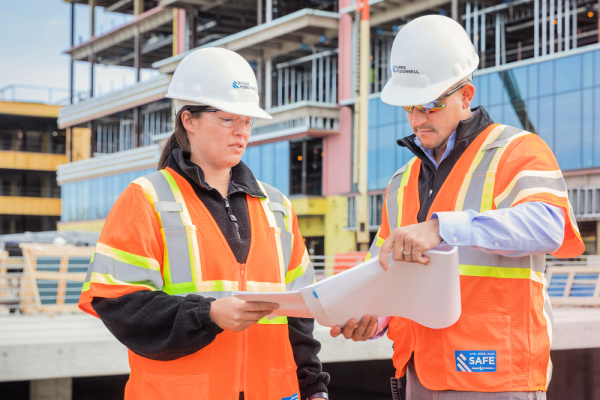
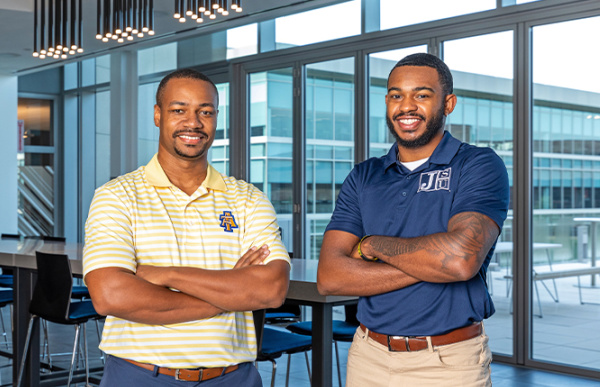
Early-stage recruitment
One of the first steps to instilling a more diverse workforce is understanding what diversity means, and what it looks like. Does it mean more ethnically diverse? More women in the workforce? More socio-economic parity?
“What we’ve done recently is taken a look at how we choose to interpret the words diversity, equity and inclusion [DEI],” said Tana Cashion, senior vice president of human resources with Devon Energy. “With diversity, we talk about it as being foundational to Devon’s success and that our team includes people with a variety of backgrounds, perspectives, experiences and abilities. That’s how we think about diversity.”
She added that equity is also a hiring priority at the company.
“We believe that fairness is at the center of the core of our culture, policies and practices,” Cashion said. “We strive for all employees to have equal access to opportunities.”
“And then inclusion, we believe in relationships, and we’ll ensure all employees are seen, valued, heard and connected,” she continued. “If you look at each of those definitions, we try to think very comprehensively about how everybody in the company should be on the same page about what those things mean, because [diversity] can mean a lot of different things.”
To build a foundation for diversity in the oil and gas industry workplace, industry associations and companies themselves are starting, in many cases, at the bottom floor: childhood education. It’s a long-term play, investing time and resources into programs and outreach efforts to plant the seed of, eventually, a career in the energy industry.
“We’re all trying to have a rising tide that lifts all boats,” said Leon Harden, DEI strategy manager with Burns & McDonnell. “That’s why we’re investing in K through 12 education and mentorship. That’s why we do over 400 job shadows for high school kids. At Burns & McDonnell we have a program called Battle of the Brains, where kids come in and we get them interested in STEM really early. Because it’s not just enough to recruit at diverse conferences and go to HBCUs [historically Black colleges and universities] and other minority serving institutions, as we do. We have to jump ahead a little bit and get kids interested really early so that they choose to go into STEM-related degree programs that are available to them in most colleges and universities.”
Devon Energy has taken a similar approach to early-stage recruitment, having instituted STEM programs at elementary schools since 2016 in the areas in which Devon operates.
“We’ve been a part of opening more than 100 STEM centers in schools and learning centers,” Cashion said. “That’s been an amazing experience to see and be a part of, and it has really had an impact on hundreds and hundreds of students exposing them to this, the skills that they will need to have in order to have the types of careers to fill the pipeline of qualified people, ultimately being able to land in this industry.”
While making early investments in a potential future employee pool establishes the science- and technology-minded, it takes more to ensure those future employees are also culturally and racially diverse.

Cultivating diversity
In addition to establishing education programs, Harden believes a key component to cultivating diversity in the industry is for companies and associations to create connections and relationships in their communities.
“We all have recruitment teams,” he said. “We all have a top-down diversity initiative, but I think it has to be more grassroots than that.”
Harden explained that a first step is ensuring total buy-in on diversity and discussing the business case for diversity.
“Once you’ve gotten there, you’ve got to convince people to utilize their network and even reach outside of their network to find, identify and attract diverse talent,” he said.
Harden noted that a common practice for companies is for them to identify “that diverse person” within their organization and have that person “carry the mantle of diversity.”
“I would encourage [organizations] to get our old white guys out there and really be carrying this mantle, because we need everybody to solve this issue, which is that we need more representation within the industry,” he said.
Cashion suggested instilling a multifaceted approach to diversity recruitment, explaining that creating a diverse workforce is not enabled through just one strategy.
“If you change your hiring numbers, that doesn’t result in a more comprehensively diverse, equitable or inclusive organization,” she said. “If you just focus on unconscious bias training, that also isn’t a one-shot deal in terms of becoming more sophisticated in diversity, equity and inclusion. It has to be a comprehensive package. So companies have to look at it through the lens of talent practices, in organizational expectations and conversations and areas of emphasis. It takes time and attention to all of those categories of diversity and inclusion.”
At Chevron Corp., intentional conversations about diversity and inclusion continue.
“Where we have underrepresentation, we study it and undertake proactive efforts to address this. This could include broader outreach to underrepresented groups, mentoring programs, investments in the educational pipeline, and assessing and removing potential barriers to hiring or advancement,” said Josetta Jones, the company’s chief diversity and inclusion officer. “Accountability for these proactive efforts is fundamental to ensuring the proportion of women and minorities at Chevron increases.”
The San Ramon, Calif.-headquartered company has been recognized by several diversity organizations, including the American Association of People with Disabilities and the National LGBT Chamber of Commerce, among others, for its diversity and inclusion initiatives.
Chevron’s recent initiatives include a program called Welcome Back, which targets individuals who have left the workforce for child or family care, or other reasons. Launched in 2019, “the program is designed to help individuals re-hone their skills and accelerate the process of reentering the workforce,” Jones said.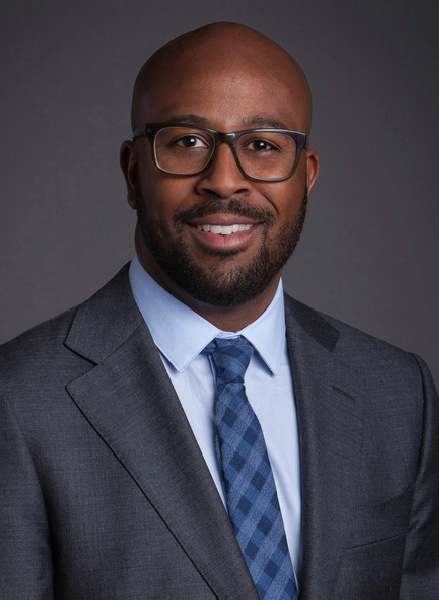
You’ve got to convince people to utilize their network and even reach outside of their network to find, identify and attract diverse talent.
— Leon Harden, Burns & McDonnell
The company is also taking aim at goals toward increasing the number of women at senior levels by establishing its Global Women’s Leadership Development Program in 2020. The program, Jones said, has three objectives: “provide strategic development planning for high-potential women earlier in their careers; offer access and visibility to influential senior leaders, job owners and personnel development committees; [and] establish resources to support development, including coaching, mentoring and skills growth.”
In all, efforts undertaken by Chevron appear to be paying off.
“We continued to develop our diverse leadership pipeline and have increased the percentage of senior-level jobs held by women and racial and ethnic minorities to 44%,” Jones said.
The case for diversity
From a societal perspective, diversity and inclusion is viewed as the right thing to do. And, in a sense, that’s true too of business and perhaps even more so the oil and gas industry, traditionally one of the least diverse and inclusive industries.
Findings from the “Diversity Matters” report bore this out, at least from a gender equity perspective. For its report, McKinsey analyzed data from 250 companies, evaluated its own data in women in the workplace and interviewed more than 20 current and former CEOs and senior executives.
McKinsey found that companies in the top quartile for women leaders are 15% more likely to have above-industry average financial returns. The company was careful to note that while no casual connection can be proved, it does point to a correlation that suggests “when companies commit themselves to diverse leadership, they are more successful.”
Adopting a culture of inclusion and diversity can also help position a company for the rapidly changing makeup of the American population as a whole, Harden said.
“The Census that just came out said that in 2044 the workforce will be minority white,” he said. “So for us, this is an opportunity to position ourselves, to be ready for the workforce of the future. This is a trend, and we have to be ahead of it.”
Harden added that many of Burns & McDonnell’s clients are asking more questions about how the company is attracting, hiring and retaining diverse talent.
“So it’s critical that we start to talk about this, that we start to brand this [and] that we start to communicate it not only to our employees but externally as well,” he said.
From an operator’s perspective, Devon sees diverse talent acquisition as paramount to staying in step with the rapid evolution of the technologies used to grow their operations and business.
“[The business case for diversity] is extremely compelling in that our industry relies upon technology and innovation,” Devon’s Cashion said. “You cannot move forward in innovation and technology without having a diverse set of skills, experiences and characteristics of the members of your team to really be driving toward the best results or the best outcome possible. It’s part of the fabric of how we operate.”
Analysis of a study by McKinsey & Co. of more than 1,000 companies across 15 countries shows there is a strong business case for diversity and inclusion, and “the higher the representation, the higher the likelihood of outperformance.”
The consulting firm reported in its 2020 “Diversity Wins: How Inclusion Matters” study that companies in the top quartile of gender diversity on executive teams were 25% more likely to see above-average profitability than their peers in the fourth quartile. The finding was based on 2019 analysis and was up from 21% in 2017 and 15% in 2014.
“In the case of ethnic and cultural diversity, the findings are equally compelling. We found that companies in the top quartile outperformed those in the fourth by 36% in terms of profitability in 2019, slightly up from 33% in 2017 and 35% in 2014,” McKinsey stated in the report. “And, as we have previously found, there continues to be a higher likelihood of outperformance difference with ethnicity than with gender.”
There are plenty of studies that show how a more diverse workforce leads to diversity of thought and more creative solutions, which in turn improves results, according to Stephanie Hertzog, CEO of Sodexo Energy & Resources. However, she has concerns about attracting talent and keeping them.
“Our industry is going through a tough time, and we really need the best and brightest minds helping us through the energy transition,” Hertzog said. “While we’ve historically been able to attract them, we are seeing some of the best and brightest pause on their decisions.”
As a mentor to a recent chemical engineering graduate from Texas A&M University, Hertzog faced the possibility of seeing her mentee leave the industry after just entering it.
“She is still there now...so we’ll see. Her concerns are a few fold,” Hertzog said. “One is just where this industry is headed and if there are going to be great career opportunities.”
The new hire, Hertzog explained, questioned whether oil and gas was the right industry to commit her career to. The timing of the global pandemic created another set of circumstances that compounded those feelings of doubt. Working from home meant little access to and guidance from experienced coworkers, something that was not limited to the energy field.
It helps to have a support network, Hertzog said. Such support systems can be a godsend when facing challenges. It can be helpful to have people, outside of immediate family or workspace, who have gone through similar experiences to talk to, she said.
Hertzog’s network of confidantes was called the Alpha Girls, nicknamed by her father, she said after recalling a bad day when motherhood and work duties collided. She found herself out of town on business crying in a Houma, La., restroom having forgotten her breast pump in Houston.
“There are definitely challenges that women face that men just don’t,” Hertzog said.
Hertzog, who has worked in energy services, pointed out that during her career she has never had a female supervisor and rarely saw women higher than her on the chain unless they worked in human resources or legal.
Research unveiled in 2021 by the Energy Technology & Workforce Council, working with the consulting firm Accenture, on the U.S. oil and gas workforce showed the percentage of women and ethnic minorities in the sector still trails their representations in the overall U.S. workforce.
The study revealed women account for 47% of the overall U.S. workforce, compared to 19% of the U.S. oil and gas workforce (up from 15% in 2018).
The study concluded that ethnic minority representation, the first year the council included the category in the study, within the sector also lags the overall U.S. workforce. In all, Black/ African American, Asian and Hispanic/Latino employees make up 36% of the overall U.S. workforce. For the U.S. oil and gas workforce, it’s 28%.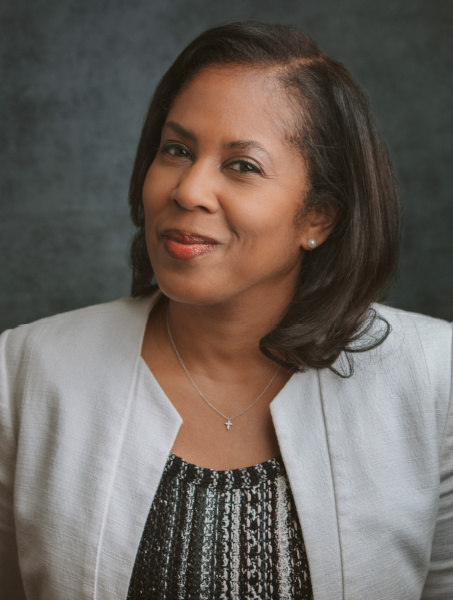
A culture that is built on a common purpose, teamwork, respect and feedback—and rooted in inclusion, trust and empowerment—is essential for everyone to be their best in the workplace.
— Josetta Jones, Chevron
“It’s hard when you don’t see anyone who looks like you or has gone through similar things you’re going through,” Hertzog said. “You have no example of someone who made it through. There were definitely times when I felt like I was failing at all of it—I wasn’t a good wife, I wasn’t a good mother, I wasn’t a good employee. But upon reflection, I was typically putting more pressure on myself than anyone else was.”
Besides the so-called Alpha Girls, great bosses made the difference for Hertzog.
“I don’t think they were necessarily any more understanding of the plight of the working mother than the working father,” she said of her supervisors, “but I’ve been fortunate to work for empathetic leaders, and that’s important regardless of gender or race.”
Prioritizing inclusion
Support networks have formed at companies that have put DEI among their priorities. These employee networks bring together people with common identities or experiences, providing supportive environments for career development and growth.
Sodexo has nine employee business resource groups, which include gender, race, veterans and disabled employees.
Companies like bp and Marathon Oil Corp. are among the energy companies with similar resource groups. Both have undergone strategic transformations: bp transitioned from an international oil company to an integrated energy company in 2020, while Marathon split into two independent companies in 2011. Diversity has been part of both companies’ ambitions, and both have made additions and set new goals recently regarding their DEI efforts.
bp, which published its first DEI report in June 2021, is recognized as having one of the energy industry’s most mature programs, according to Tamara Page, bp’s head of Western Hemisphere workforce DEI.
“I will say we’re still learning. This is a journey for us,” Page said during the Offshore Technology Conference in Houston. “We don’t have all the answers, and we are continually evolving and reinventing ourselves within the DEI space. When I started way back, it was just the D; it was just diversity. And then it moved into diversity and inclusion, and now it’s diversity, equity and inclusion.”
One of bp’s latest awakenings came in 2020 with the deaths of George Floyd, Ahmaud Arbery and Breonna Taylor. She said the company recognized the need to respond to what was happening in the world because “our people are our biggest assets.”
The company held “listening lounges” for its employees to share their experiences with racial injustice. The lounges attracted about 6,000 people, Page said.
“I don’t think I’m alone in saying this,” Page said. “It was a change in our organization.”
While bp has had DEI programs in place for a number of years, the company went further after its shared conversation. Its Framework for Action plan includes focusing on transparency, releasing an annual DEI report; accountability, linking diversity and inclusion progress to performance management; and talent, targeting Black employee development.
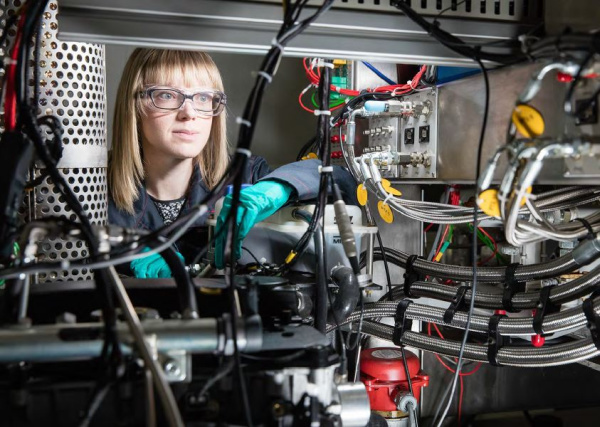
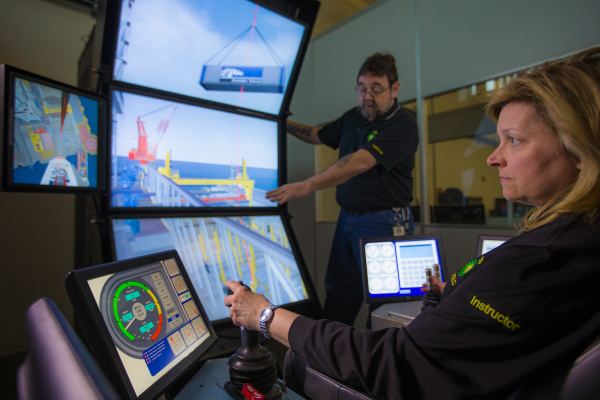
The plan includes a goal to double spend with U.S.-based diverse suppliers by 2023, embedding DEI metrics into entity operating plans and the annual performance review process for all employees as well as doubling representation of African Americans in group leadership by 2023.
“To some of you, this may feel like we’re focusing on one group of employees over another. To others, these actions will not be enough,” Dave Lawler, bp America chairman and president, said in a statement at the time. “Balance is hard to achieve, but I’m confident this framework is the right path for bp’s future. The bpLT, leaders across the U.S. and I are all committed to this important work. This is an ambitious framework, and we will dedicate the resources we need to achieve it.”
The year 2020 was marked by a wave of racial unrest in the U.S. that was reignited by the deaths of Floyd, Arbery and Taylor. The deaths sparked protests and again put the spotlight on incidents of systematic racism toward Blacks in the U.S.
In 2020 Chevron evolved its long-term strategy toward improving racial equity. The change came in response to what Jones described as a “convergence of events that include the spread of COVID-19, an economic downturn that led to massive unemployment and social unrest growing out of the death of George Floyd and other Black citizens in the United States.”
The company’s effort focused on increasing investment and support in the education and development of Black talent and leadership.
“Our racial equity approach includes a $15 million commitment that has four pillars: education, job creation, talent and leadership development, and community and small business partnerships,” Jones said. “We are also working to expand our existing relationships with community, business and educational partners such as K-12 science, technology, engineering and mathematics organizations and historically Black colleges and universities.”
In 2020 Marathon launched its Black Employees and Allies of Marathon (BEAM) Network, which is open to all employees. The move was not performative, said Shara Hammond, leadership and inclusion manager with Marathon Oil. Speaking during the Houston conference, Hammond said the company started that journey in 2018 because of the gap in psychological safety.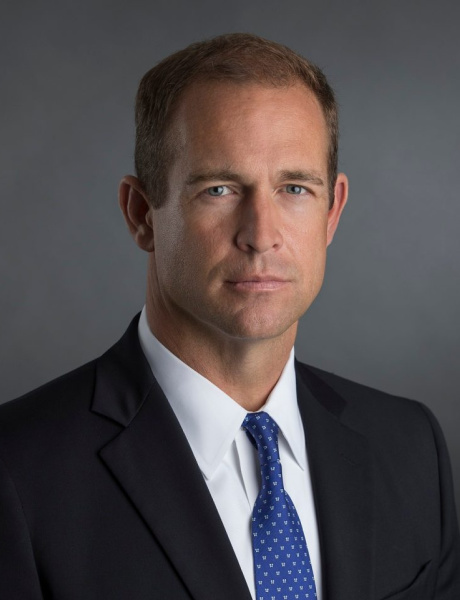
Our continuing goal is to foster an environment where all employees can reach their full potential and improve the advancement of African Americans and other underrepresented minorities. This framework will help overcome our biggest employment progression and retention challenges, and we’ll continue using it to make other improvements as needed.
— Dave Lawler, bp America chairman and president, August 2020 note to bp’s U.S. employees
According to Marathon’s website, the BEAM Network enables employees to connect to support each other in personal and professional development; encourages Black employees to advance their careers through mentorships, networking and organizational partnerships; creates programs that increase awareness and understanding of different perspectives in the workplace; promotes a diversified workforce including in various job functions; and increases awareness within the Black community of opportunities within the oil and gas industry.
“They’ve just embraced that by creating dialogue circles where Black employees and allies are able to have conversations about inclusion, differences, commonalities and diversity,” Hammond said of Marathon’s workforce. “From that, they want to build a strategy so that we then take on leadership behaviors around allyship in our organization.”
That year Marathon also partnered with the Chinese American Professionals Group to offer virtual training events on topics such as bystander training, feeling safe in the workplace, psychological safety and moving beyond crisis. The move came as anti-Asian harassment and attacks surged in the U.S. during the COVID-19 pandemic.
Marathon’s actions were a continuation of the company’s grassroots, employee-driven DEI efforts. When developing such strategies and forming programs, it might be natural to take a top-down approach, implement best practices and let data drive decisions, Hammond said, but it’s important to listen to employees.
“We often start with the data. The data will tell you one story; that’s completely fine. We’re data-driven people,” she said. “But at the end of the day, your employees know exactly where you are and where you may need to go. So that’s where you find your next best step, instead of just looking for a best practice.”
Diversity, Hertzog said, was not talked about by her previous employer; however, it is “part of the DNA” at Sodexo. The onshore and offshore food and facilities management services company has a workforce that is 55% women. Like some energy companies, Sodexo offers DEI training with participation tied to compensation for executives, and job candidate pools must be diverse. The company also extends its DEI values to suppliers, having committed globally to spend 25% of its purchases with small- and medium-sized businesses with a focus on local and diverse by 2025.
“We have a long way to go on both gender and ethnic diversity,” Hertzog said of the energy industry. “The most important thing we can do is be really intentional about it.”
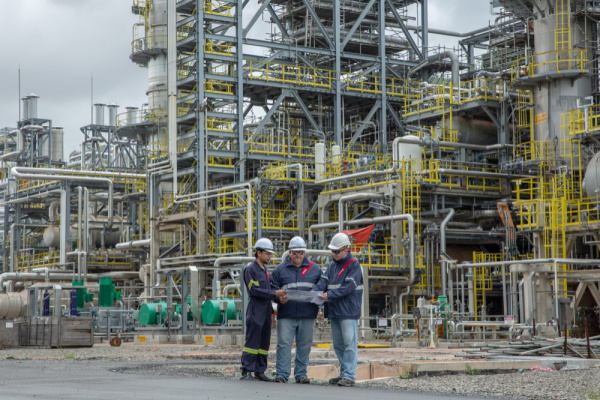
Recommended Reading
Tinker Associates CEO on Why US Won’t Lead on Oil, Gas
2024-02-13 - The U.S. will not lead crude oil and natural gas production as the shale curve flattens, Tinker Energy Associates CEO Scott Tinker told Hart Energy on the sidelines of NAPE in Houston.
Chesapeake Enters into Long-term LNG Offtake Agreement
2024-02-13 - Chesapeake Energy entered into a long-term liquefaction offtake sale and purchase agreement with Delfin LNG and Gunvor Group for a 20-year period.
The Secret to Record US Oil Output? Drilling Efficiencies—EIA
2024-03-06 - Advances in horizontal drilling and fracking technologies are yielding more efficient oil wells in the U.S. even as the rig count plummets, the Energy Information Administration reported.
CERAWeek: Gunvor Sees Balanced Oil Market, No Tightness in LNG Supplies
2024-03-18 - The global LNG market is not currently tight, Gunvor Chairman Torbjörn Törnqvist said at CERAWeek, contradicting the view shared earlier in the day by TotalEnergies.
What's Affecting Oil Prices This Week? (March 18, 2024)
2024-03-18 - On average, Stratas Advisors predicts that supply will be at a deficit of 840,000 bbl/d during 2024.


